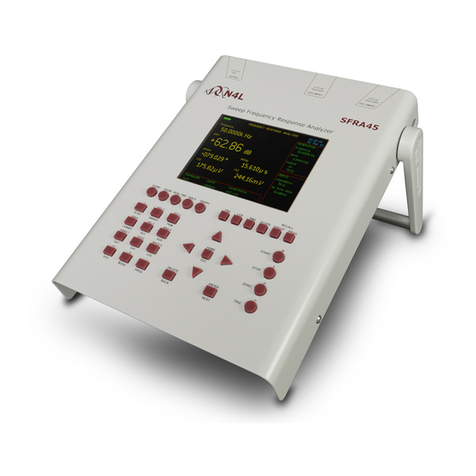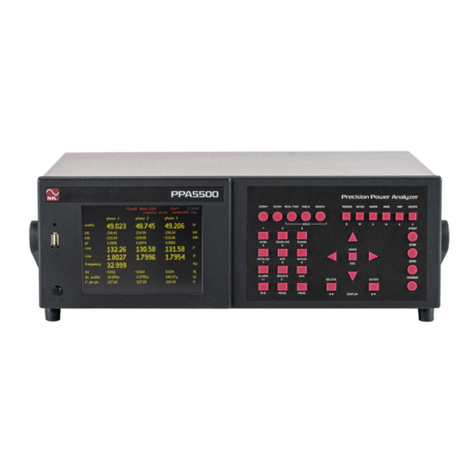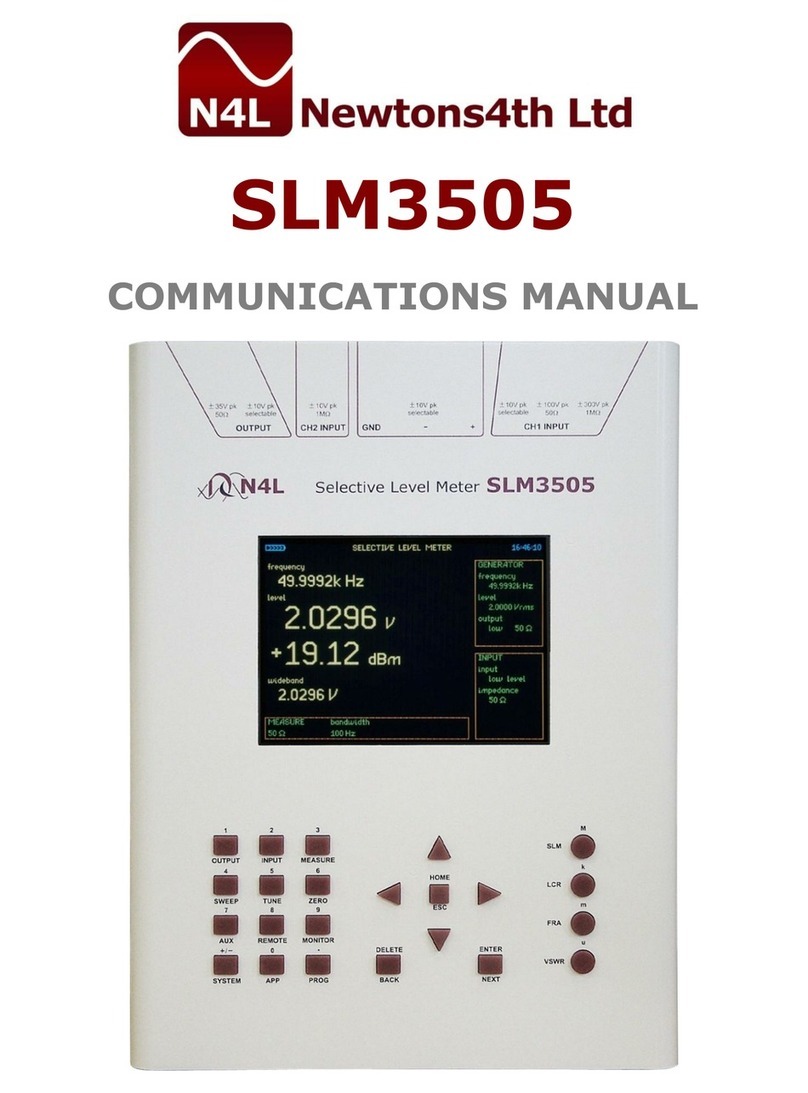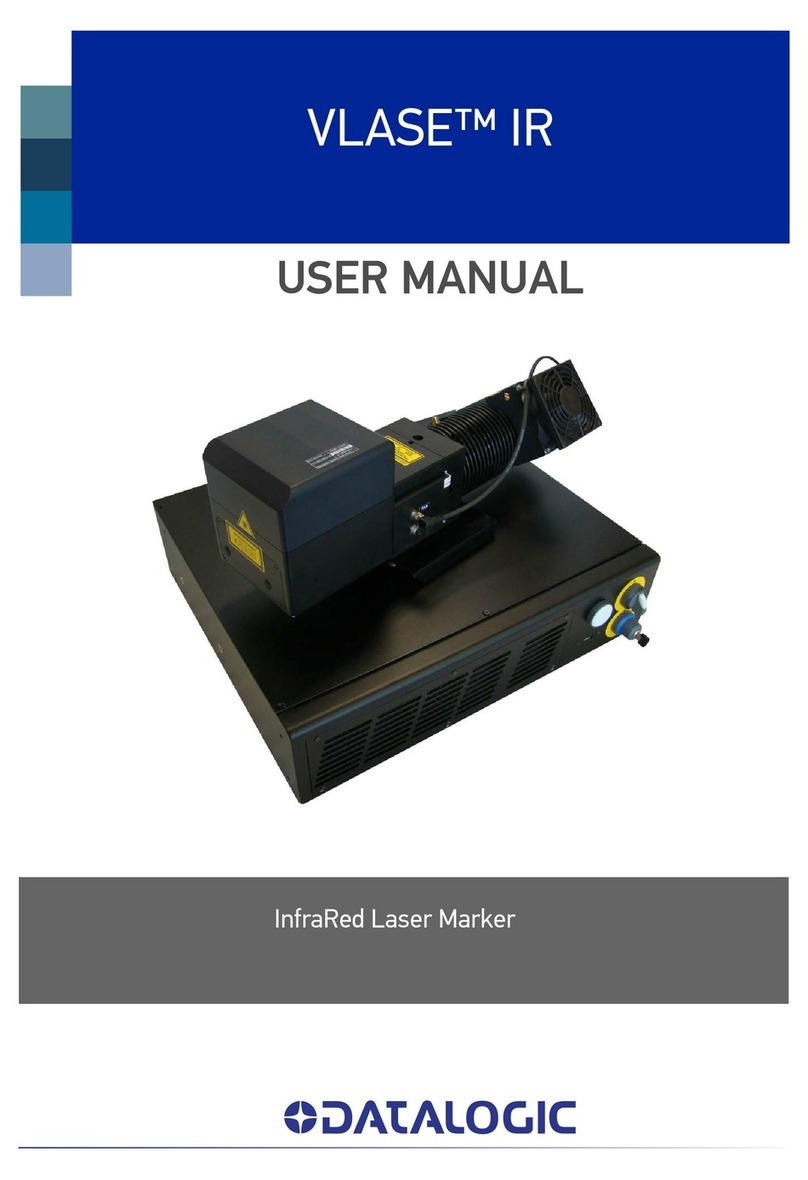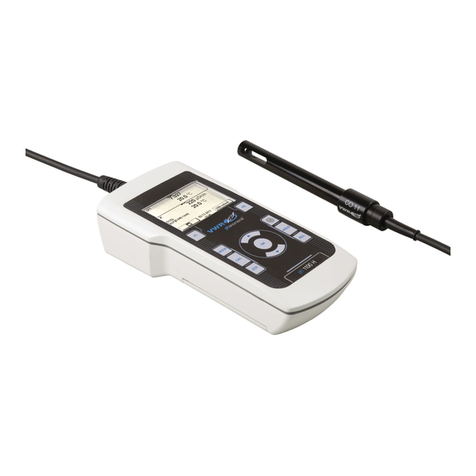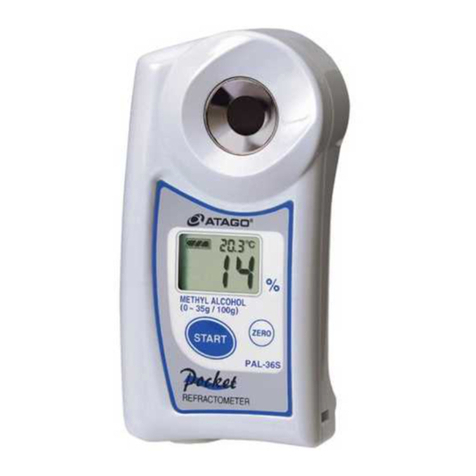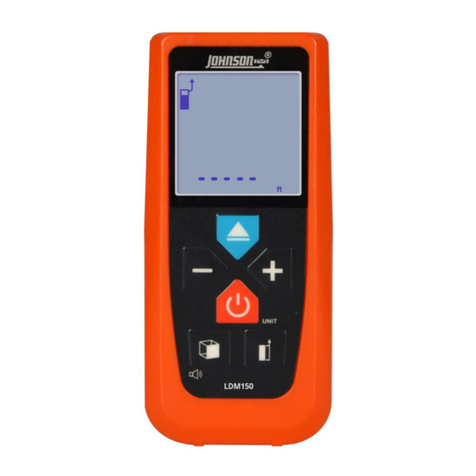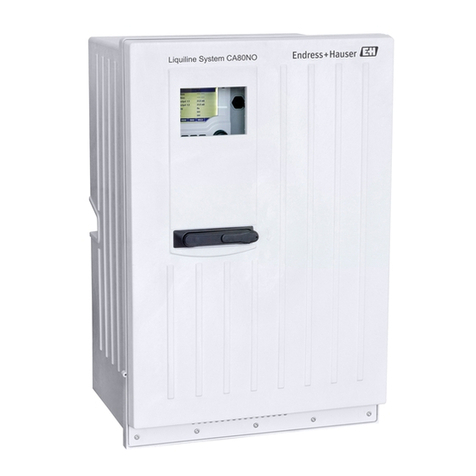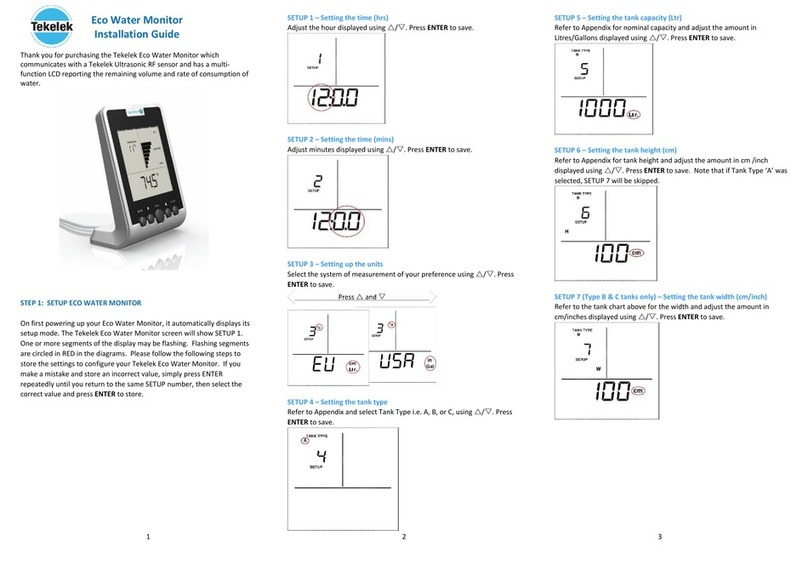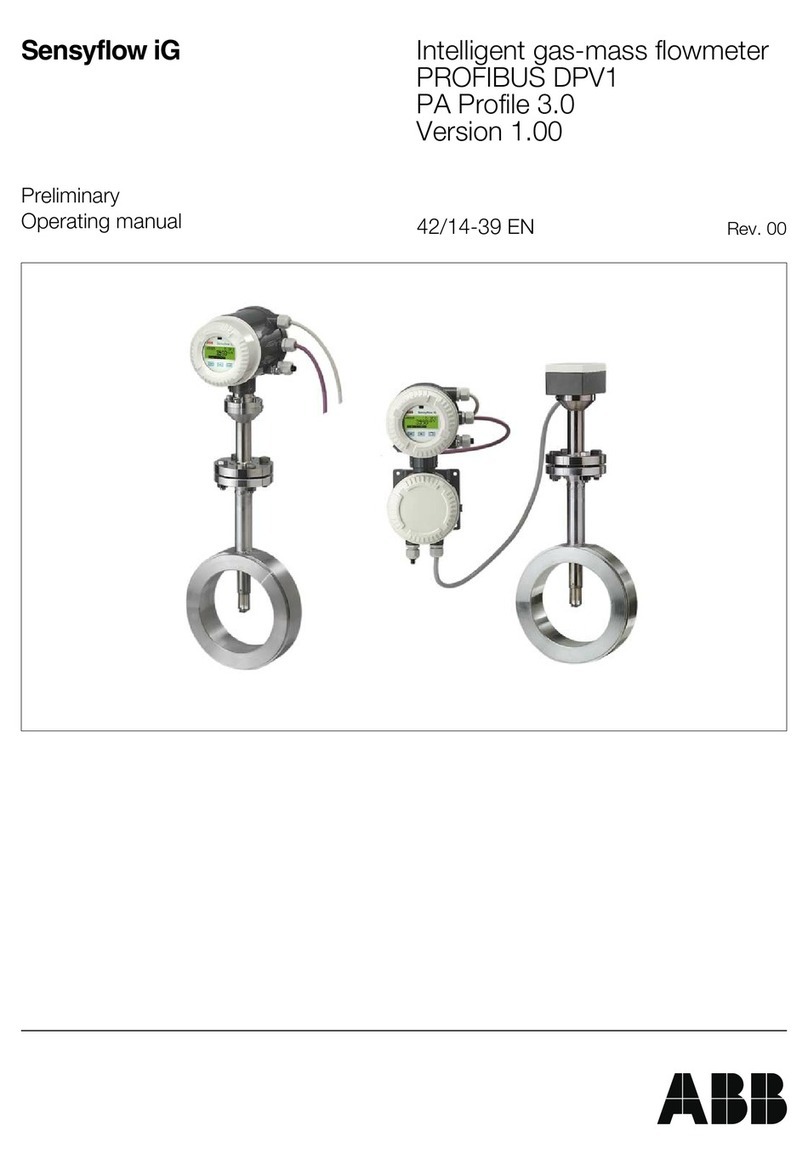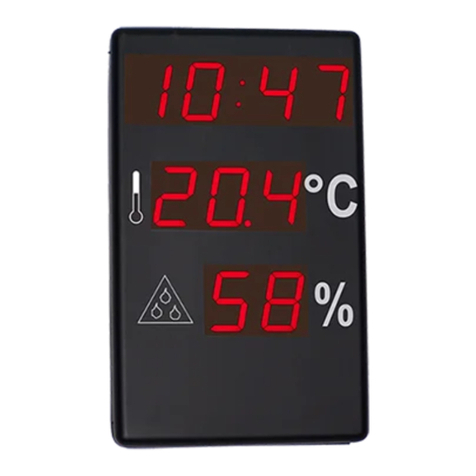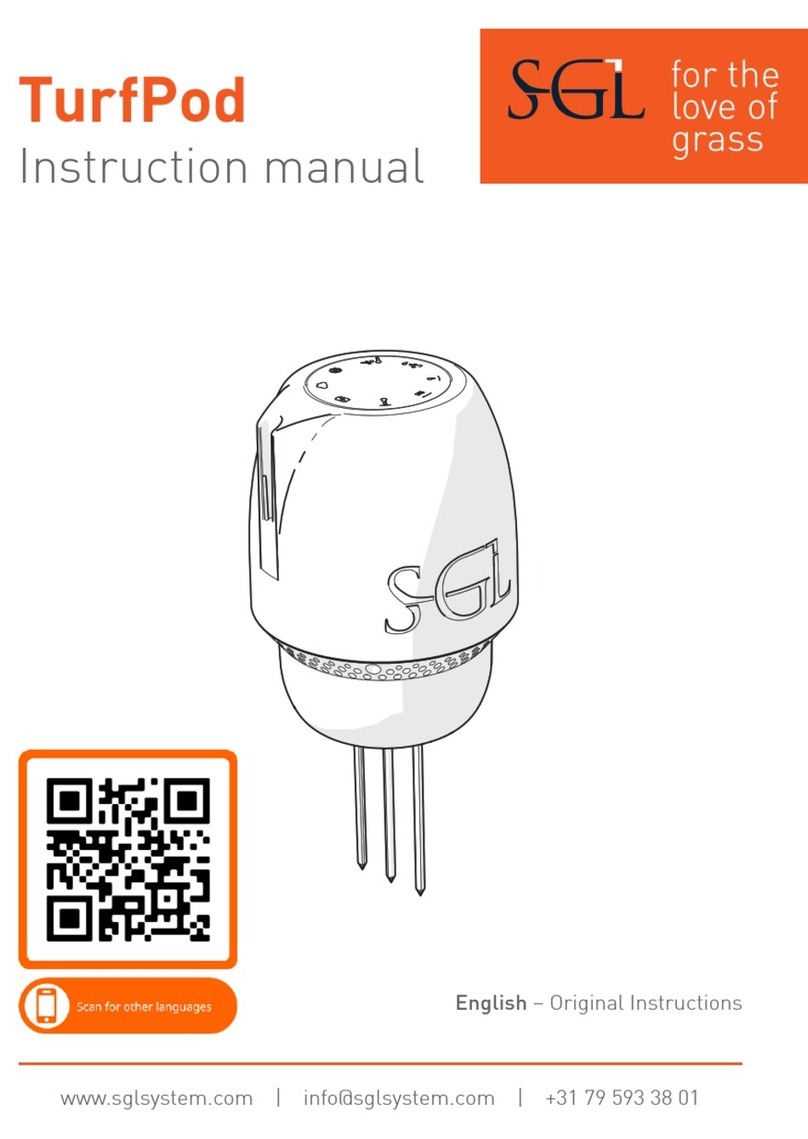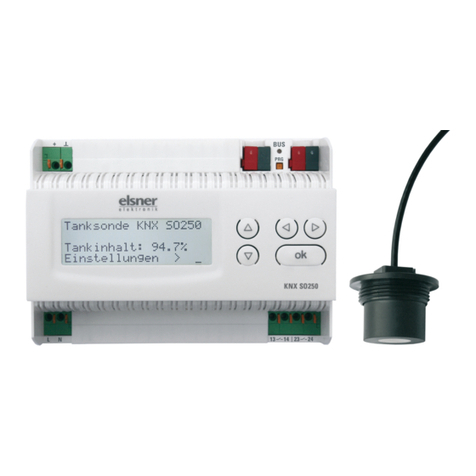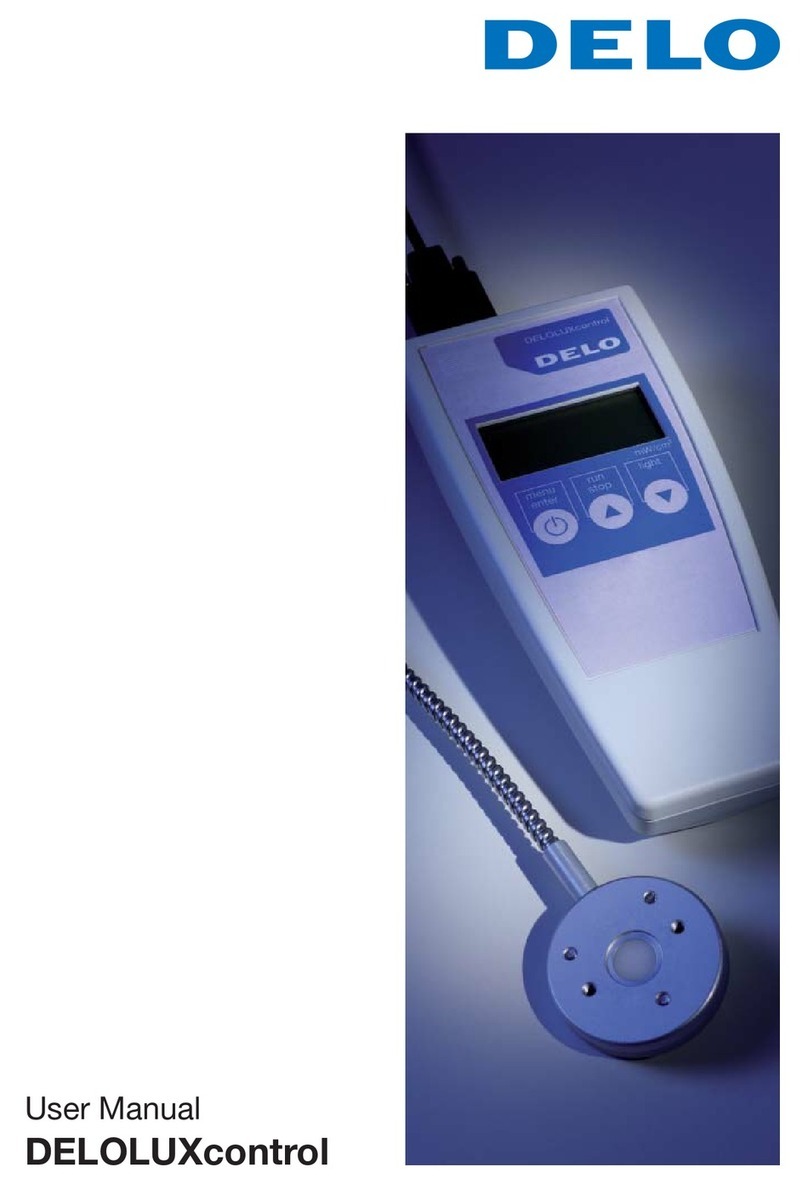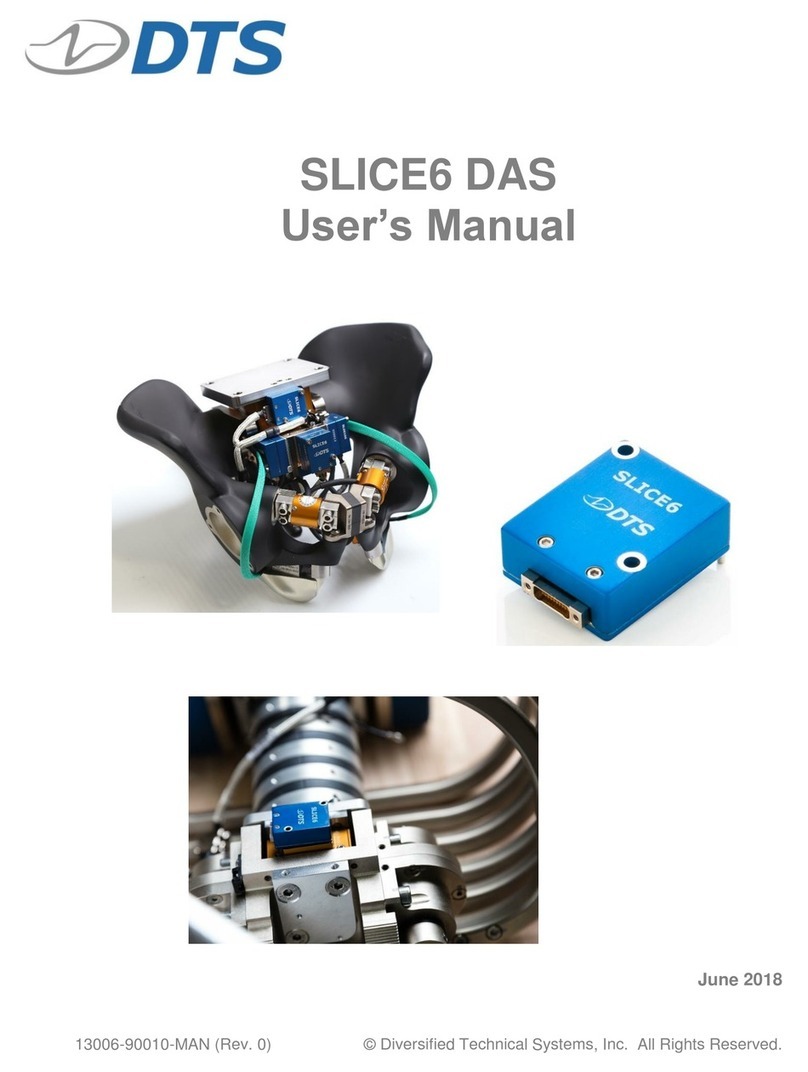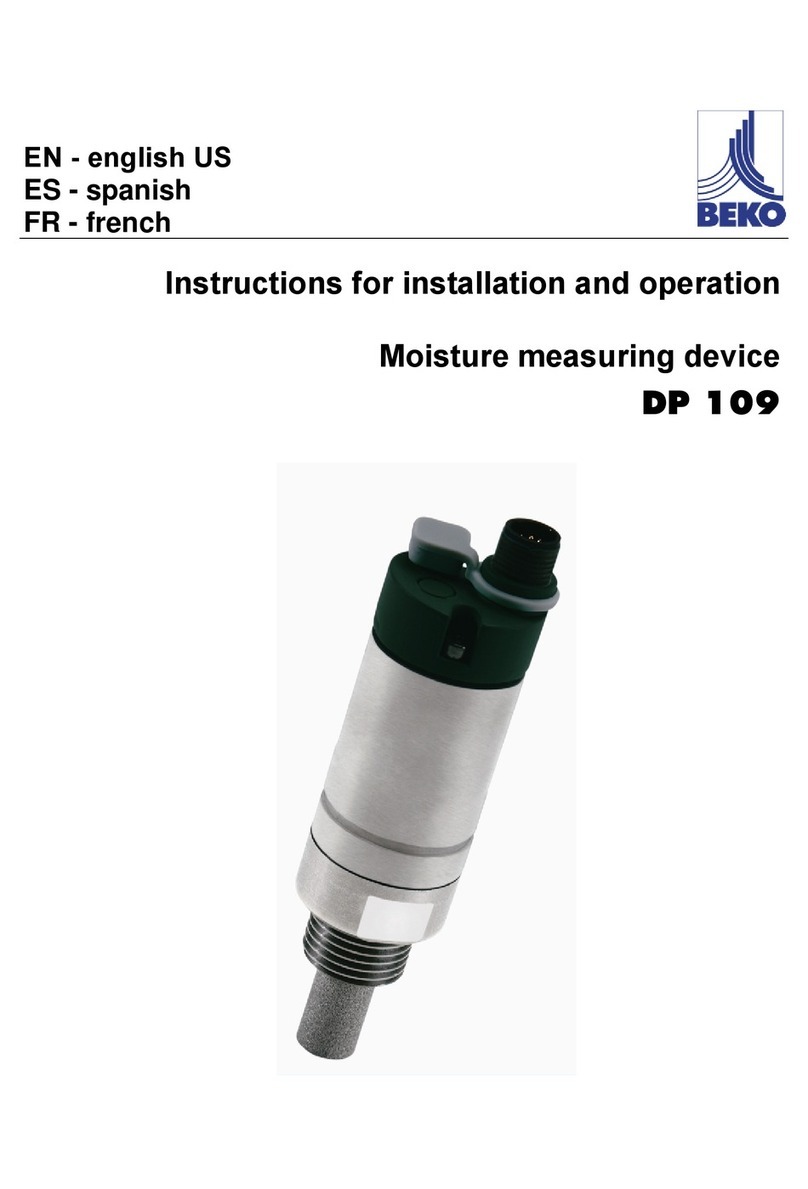Newtons4th PSM3750 NumetriQ User manual

PSM3750 -NumetriQ
Version 1.10 06th April 2017
USER MANUAL

“Do not be hasty when making measurements.”
NumetriQ is a precision instrument that provides you with the
tools to make a wide variety of measurements accurately,
reliably, and efficiently - but good metrology practice must be
observed. Take time to read this manual and familiarise yourself
with the features of the instrument in order to use it most
effectively.

DANGER OF ELECTRIC SHOCK
Only qualified personnel should install this equipment,
after reading and understanding this user manual. If in
doubt, consult your supplier.
RISQUE D'ELECTROCUTION
L'installation de cet équipement ne doit être confiée qu'à
un personnel qualifié ayant lu et compris le présent
manuel d'utilisation. Dans le doute, s'adresser au
fournisseur.
GEFAHR VON ELEKTRISCHEM SCHOCK
Nur entsprechend ausgebildetes Personal ist berechtigt,
diese Ausrüstung nach dem Lesen und Verständnis dieses
Anwendungshandbuches zu installieren. Falls Sie Zweifel
haben sollten, wenden Sie sich bitte an Ihren Lieferanten.
RISCHIO DI SCARICHE ELETTRICHE
Solo personale qualificato può installare questo
strumento, dopo la lettura e la comprensione di questo
manuale. Se esistono dubbiconsultate il vostro
rivenditore.
PELIGRO DE DESCARGA ELÉCTRICA
Solo personal cualificado debe instalar este instrumento,
después de la lectura y comprensión de este manual de
usuario. En caso de duda, consultar con su suministrador.

IMPORTANT SAFETY INSTRUCTIONS
This equipment is designed to comply with BSEN 61010-1
(Safety requirements for electrical equipment for
measurement, control, and laboratory use) –observe the
following precautions:
Ensure that the supply voltage agrees with the rating of
the instrument printed on the back panel before
connecting the mains cord to the supply.
This appliance must be earthed. Ensure that the
instrument is powered from a properly grounded supply.
The inputs and outputs must not be connected to
common mode signals greater than 500V peak.
The inputs must not be connected to signals greater
than 500V peak.
Keep the ventilation holes on the underneath and sides
free from obstruction.
Do not operate or store under conditions where
condensation may occur or where conducting debris
may enter the case.
There are no user serviceable parts inside the
instrument –do not attempt to open the instrument,
refer service to the manufacturer or his appointed
agent.
Note: Newtons4th Ltd. shall not be liable for any
consequential damages, losses, costs or expenses
arising from the use or misuse of this product
however caused.

PSM3750 user manual
II
DECLARATION OF CONFORMITY
Manufacturer: Newtons4th Ltd.
Address: 1 Bede Island Road
Leicester
LE2 7EA
We declare that the product:
Description: Phase Sensitive Multimeter
Product name: NumetriQ
Model: PSM3750
Conforms to the EEC Directives:
2014/30/EU relating to electromagnetic compatibility:
EN 61326-1:2013
2014/35/EU relating to Low Voltage Directive:
EN 61010-2-030:2010:
January 2017
Eur Ing Allan Winsor BSc CEng MIEE
(Director Newtons4th Ltd.)

PSM3750 user manual
III
WARRANTY
This product is guaranteed to be free from defects in
materials and workmanship for a period of 36 months from
the date of purchase.
In the unlikely event of any problem within this guarantee
period, first contact Newtons4th Ltd. or your local
representative, to give a description of the problem. Please
have as much relevant information to hand as possible –
particularly the serial number and release numbers (press
SYSTEM then LEFT).
If the problem cannot be resolved directly then you will be
given an RMA number and asked to return the unit. The
unit will be repaired or replaced at the sole discretion of
Newtons4th Ltd.
This guarantee is limited to the cost of the NumetriQ itself
and does not extend to any consequential damage or
losses whatsoever including, but not limited to, any loss of
earnings arising from a failure of the product or software.
In the event of any problem with the instrument outside of
the guarantee period, Newtons4th Ltd. offers a full repair
and re-calibration service –contact your local
representative. It is recommended that NumetriQ be re-
calibrated annually.

PSM3750 user manual
IV
ABOUT THIS MANUAL
PSM3750 has of number of separate measurement
functions that share common resources such as the
keyboard and display.
Accordingly, this manual first describes the general
features and specification of the instrument as a whole;
and then describes the individual functions in detail.
Each function is described in turn, in its own chapter, with
details of the principles on which it is based, how to use it,
the options available, display options, specifications etc.
Detailed descriptions of the RS232 command set is given
in the separate manual “PSM3750 communications
manual”.
Revision 1.10
This manual is copyright © 2017 Newtons4th Ltd. and all
rights are reserved. No part may be copied or reproduced
in any form without prior written consent.
06th April 2017

PSM3750 user manual
V
CONTENTS
1Introduction –general principles of operation ........ 1-1
1.1 Generator output .................................................... 1-4
1.2 Voltage inputs ........................................................ 1-5
2Getting started ................................................. 2-1
2.1 Unpacking.............................................................. 2-1
2.2 Keyboard and controls ............................................. 2-3
2.3 Basic operation ....................................................... 2-4
2.4 Measurement Selectivity .......................................... 2-5
3Using the menus ............................................... 3-1
3.1 Selection from a list ................................................ 3-3
3.2 Numeric data entry ................................................. 3-4
3.3 Text entry .............................................................. 3-5
4Special functions ............................................... 4-1
4.1 Display zoom.......................................................... 4-1
4.2 Program store and recall .......................................... 4-2
4.3 Zero compensation.................................................. 4-3
4.4 Alarm function ........................................................ 4-4
4.5 Analogue output ..................................................... 4-6
4.6 Data hold ............................................................... 4-7
4.7 Results store and recall............................................ 4-8
5Using remote control ......................................... 5-1
5.1 Standard event status register.................................. 5-4
5.2 Serial Poll status byte .............................................. 5-5
5.3 RS232 connections.................................................. 5-6
6System options................................................. 6-1
6.1 User data ............................................................... 6-3
7Measurement options......................................... 7-1
7.1 ACQU - Acquisition options ....................................... 7-1
7.2 Datalog.................................................................. 7-4
7.3 SWEEP - Frequency sweep options ............................ 7-6
7.4 TRIM - Trim function ............................................... 7-8
8Output control .................................................. 8-1

PSM3750 user manual
VI
8.1 Generator specifications........................................... 8-3
9Input channels.................................................. 9-1
9.1 Trimming x10 oscilloscope probes ............................. 9-5
10 True RMS Voltmeter ........................................ 10-1
10.1 RMS voltmeter specification.................................... 10-5
11 Frequency response analyser ............................ 11-1
11.2 Quick start guide to Feedback Loop Analysis............. 11-5
12 Phase angle voltmeter (vector voltmeter) ........... 12-1
12.1 Phase angle voltmeter specification ......................... 12-4
13 Power meter................................................... 13-1
13.1 Power meter specification ...................................... 13-5
14 LCR meter...................................................... 14-1
14.1 Nyquist Diagram ................................................... 14-7
14.2 LCR meter specification ......................................... 14-9
15 Harmonic analyser .......................................... 15-1
15.1 Harmonic analyser specification .............................. 15-4
16 Transformer analyser....................................... 16-1
16.1 Turns ratio ........................................................... 16-3
16.2 Inductance & leakage inductance ............................ 16-4
16.3 AC resistance and Q factor ..................................... 16-5
16.4 DC resistance ....................................................... 16-5
16.5 Interwinding capacitance ....................................... 16-6
16.6 Magnetising current............................................... 16-7
16.7 Return loss........................................................... 16-8
16.8 Insertion loss ....................................................... 16-9
16.9 Harmonics and distortion ......................................16-11
16.10 Longitudinal balance.............................................16-12

PSM3750 user manual
VII
APPENDICES
Appendix A Accessories
Appendix B Serial command summary
Appendix C Available character set
Appendix D Configurable parameters
Appendix E Contact details

PSM3750 user manual
1-1
1Introduction –general principles of operation
NumetriQ is a self-contained test instrument, with one
output and two or three inputs, which incorporates a suite
of test functions.
NumetriQ has a wide bandwidth, isolated, generator
output that can be used as signal generator for sine,
square, triangle, or sawtooth waveforms, or true white
noise. A dc offset may be added to the signal generator
output. The output is fully isolated from earth to 600Vpk
cat II.
NumetriQ has two or three isolated, high bandwidth,
voltage inputs, which use direct digital analysis at low
frequencies and a heterodyning technique to give high
accuracy at high frequencies. The inputs are fully isolated
from each other and from earth to 600Vpk cat II.
NumetriQ has two processors:
a DSP (digital signal processor) for data analysis
a CPU (central processing unit) for control and display
At the heart of the system is an FPGA (field programmable
gate array) that interfaces the various elements, see
diagram below:

PSM3750 user manual
1-2
FPGA
CPU
DSP
This general purpose structure provides a versatile
hardware platform that can be configured by firmware to
provide a variety of test functions, including:
Signal generator
Two channel true rms voltmeter
Phase angle voltmeter (vector voltmeter)
Frequency response analyser (gain/phase analyser)
Harmonic analyser
With additional external interfaces, such as current shunts,
other functions are possible:
True rms current meter
LCR meter
Power meter
NumetriQ is configured to perform the required test
function by simple user menus, or can be controlled
remotely via a serial interface (RS232), or optionally LAN
interface or GPIB interface.
OUT
CH1
CH2
CH3

PSM3750 user manual
1-3
The programmable nature of the instrument means that
new functions can be added as they become available, or
existing functions can be enhanced, by simple firmware
download.

PSM3750 user manual
1-4
1.1 Generator output
The output sinewave is generated by direct digital
synthesis (DDS). Amplitude is set in 2 stages - a fine
control and a coarse control to give good resolution over
the whole range. The output, has a variable offset added,
is filtered and is buffered by a high speed, high current
buffer. There is also an earth referenced TTL Sync output
for oscilloscope synchronization etc, constantly running at
the selected generator frequency.
The DDS is clocked at 210 MHz.
The DAC resolution is 14 bit.
The fine amplitude control is 10 bit (0.1% fsd).
The coarse amplitude control is 4 bit.
The maximum output level is 10V peak.
The maximum output current is 200mA peak.
The 0V of the output is isolated from earth.
The output impedance is 50.
The output frequency range is 10uHz to 50MHz.
The Sync output is TTL level at generator frequency.
attenuate
offset
filter
50
DDS
output
buffer

PSM3750 user manual
1-5
1.2 Voltage inputs
Each input consists of a pair of ac, or ac+dc, coupled high
impedance buffers, one for the high voltages and one for
lower voltages. The BNC safety connector and 4mm safety
connectors are in parallel –either connector may be used.
After the selectable heterodyning and filtering, there is a
series of gain stages leading to an A/D converter. The data
from the A/D is transmitted across an isolation barrier to
the DSP. Selection of the input gain, the heterodyning and
the sampling of the A/D converter are under the control of
the DSP. There is an autozero switch at the front end for
dc accuracy.
The maximum input is 500V peak.
The full scale of the lowest range is 3mV peak.
The input frequency range is dc to 50 MHz.
The A/D converter resolution is 14 bit.
The A/D sample rate is variable to 1M samples/s.
input
selection,
hetero-
dyning,
& filtering
A/D
isolation
barrier
variable
gain
high Z
input buffers

PSM3750 user manual
2-1
2Getting started
The NumetriQ is supplied ready to use –it comes complete
with an appropriate power lead and a set of test leads. It
is supplied calibrated and does not require anything to be
done by the user before it can be put into service.
2.1 Unpacking
Inside the carton there should be the following items:
one NumetriQ unit
one appropriate mains lead
two or three voltage probes
one set of output leads with croc clips
one null modem cable to connect to a computer
one USB to connect to a computer
this manual
one communications manual
Having verified that the entire above list of contents is
present, it would be wise to verify that your NumetriQ
operates correctly and has not been damaged in transit.
First verify that the voltage rating on the rear of the
NumetriQ is appropriate for the supply, then connect the
mains cord to the inlet on the rear panel of the NumetriQ
and the supply outlet.
Switch on the NumetriQ. The display should illuminate with
the model name and the firmware version for a few
seconds while it performs some initial tests. It should then
default to the FRA display. Note that the switch on
message can be personalised –see the User Data section
under System Options.

PSM3750 user manual
2-2
The generator is off by default so the display may read
some random values due to noise pick up. Connect the
Red and Black output leads to the 4mm output sockets on
the rear of the NumetriQ and input probes to the BNC on
each of the input channels. Connect the output to all the
inputs by connecting the black clip on the output lead to
the 0V clip on each of the input probes, and the red clip of
the output lead to the input probes. Note that this is
easiest to do by connecting across a resistor (any value
above 1k).
Press the OUT key to invoke the output menu, then press
the UP key to select the output on/off control then the
RIGHT key to turn on the output by selecting “on”.
Exit the menu by pressing the ENTER button or the HOME
button twice.
The display should now indicate a magnitude value of
about 1.4V on all channels, each of which should indicate
the 3V range; check that the gain reads 0.000dB
0.010dB, and that the phase reads 0.0000.010.
In the event of any problem with this procedure, please
contact customer services at Newtons4th Ltd. or your local
authorised representative: contact addresses and
telephone numbers are given in the appendix at the back
of this manual.

PSM3750 user manual
2-3
2.2 Keyboard and controls
The keyboard is divided into 5 blocks of keys:
display control (5 keys top left)
function keys (6 keys top right)
setup keys (12 keys lower left)
menu control keys (7 centre keys)
action keys (4 keys lower right)
In normal operation, the cursor keys give one-touch
adjustment of various parameters, such as generator
amplitude and frequency, without having to access the
menu system.
The setup keys provide access to the menus and are used
for numeric data entry.
The function keys (FRA, PAV, LCR, RMS, POWER and
SCOPE) are also used for entering the multipliers (G, M, k,
m, u, n) for date entry and letters for text entry.

PSM3750 user manual
2-4
2.3 Basic operation
The required function can be selected by pressing the
function key, FRA, PAV, LCR, RMS, POWER, or SCOPE.
Pressing the same function key again brings up the menu
options specific to that function. For example, press PAV to
select phase angle voltmeter mode; press PAV again to
gain access to the PAV specific menu options.
Alternatively, press MODE to bring up the function specific
menus.
There are a number of menus available to configure the
instrument. All of these menus are directly accessible with
one press of the appropriate menu key. The cursor keys
allow navigation around the menus and also control the
generator when not accessing a menu.
For example, to turn on the output, press OUT to bring up
the generator control menu, press UP to select the output
on/off option, press RIGHT to select the output from the
available options. Press ENTER, or HOME twice, to exit the
menu. Press FRA to select frequency response analyser
mode and the instrument will now display the gain and
phase of the transfer function of the circuit under test at
the spot frequency specified by the output control menu.
Press LEFT or RIGHT to adjust the frequency, Press UP or
DOWN to adjust the amplitude (use the OUT menu to
change the size of the steps).
Press START and NumetriQ will start a frequency sweep
over the specified range (set in the SWEEP menu); press
TABLE to see the table of results, GRAPH to see a graph of
the results and REAL TIME to return to the real time data.

PSM3750 user manual
2-5
2.4 Measurement Selectivity
In many applications that require frequency response
analysis, it is common for the frequency of interest
(sometimes referred to as the injected frequency) to be
immersed in noise. It is therefore important that the FRA
instrument being used is able to reject frequencies other
than that of the signal of interest. This feature is usually
described as the measurement selectivity of the
instrument and in most cases; selectivity is increased as
the measurement speed is slowed down.
N4L frequency response analysers incorporate analogue
circuits with high common mode rejection and unique ‘real
time’ DFT (discrete fourier transform) analysis to provide
exceptional wideband frequency response measurements
even when the signal of interest is immersed in noise. As a
result of this design technique, users are not required to
concern themselves with the careful choice of selectivity
criteria to achieve stable measurements.
In most applications, the signal of interest is generated by
the FRA itself. When using this normal mode of operation,
PSM units from N4L will automatically analyse the
measurement signal with a DFT algorithm running at
exactly the same frequency as the injected signal. This
process eliminates the problem of signal frequency
detection.
Where an external signal source is used for signal
injection, the PSM units will detect the injected frequency
with a greater level of selectivity as the measurement
speed is slowed down. The user need only select the
measurement speed to achieve the optimum balance of
speed and measurement stability.
Other manuals for PSM3750 NumetriQ
2
Table of contents
Other Newtons4th Measuring Instrument manuals
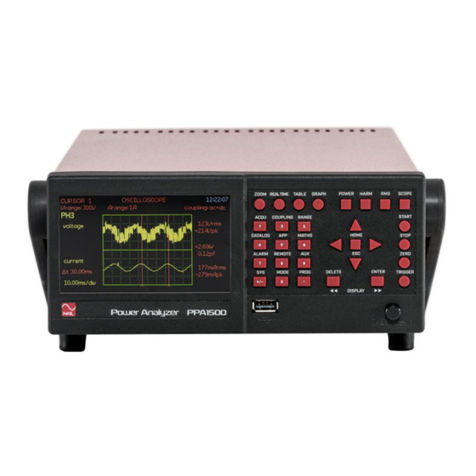
Newtons4th
Newtons4th N4L PPA500/1500 User manual
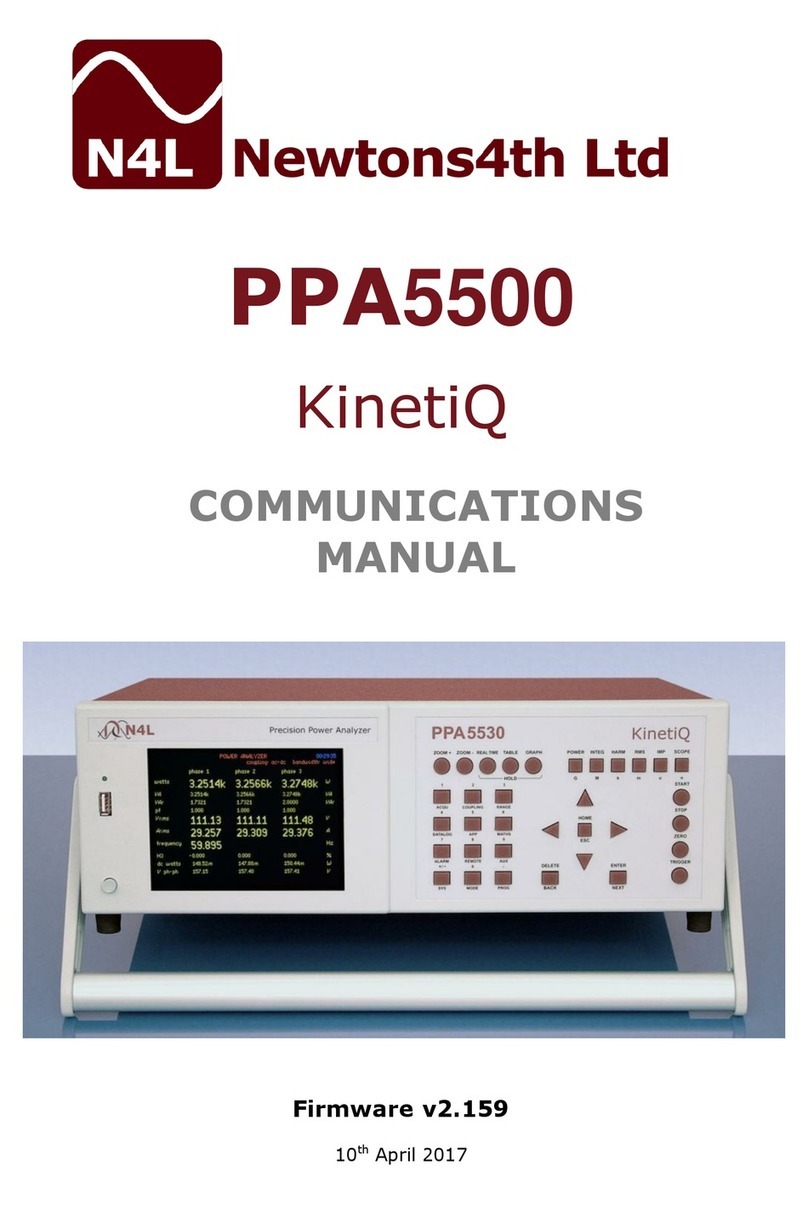
Newtons4th
Newtons4th PPA 5500 KinetiQ Use and care manual
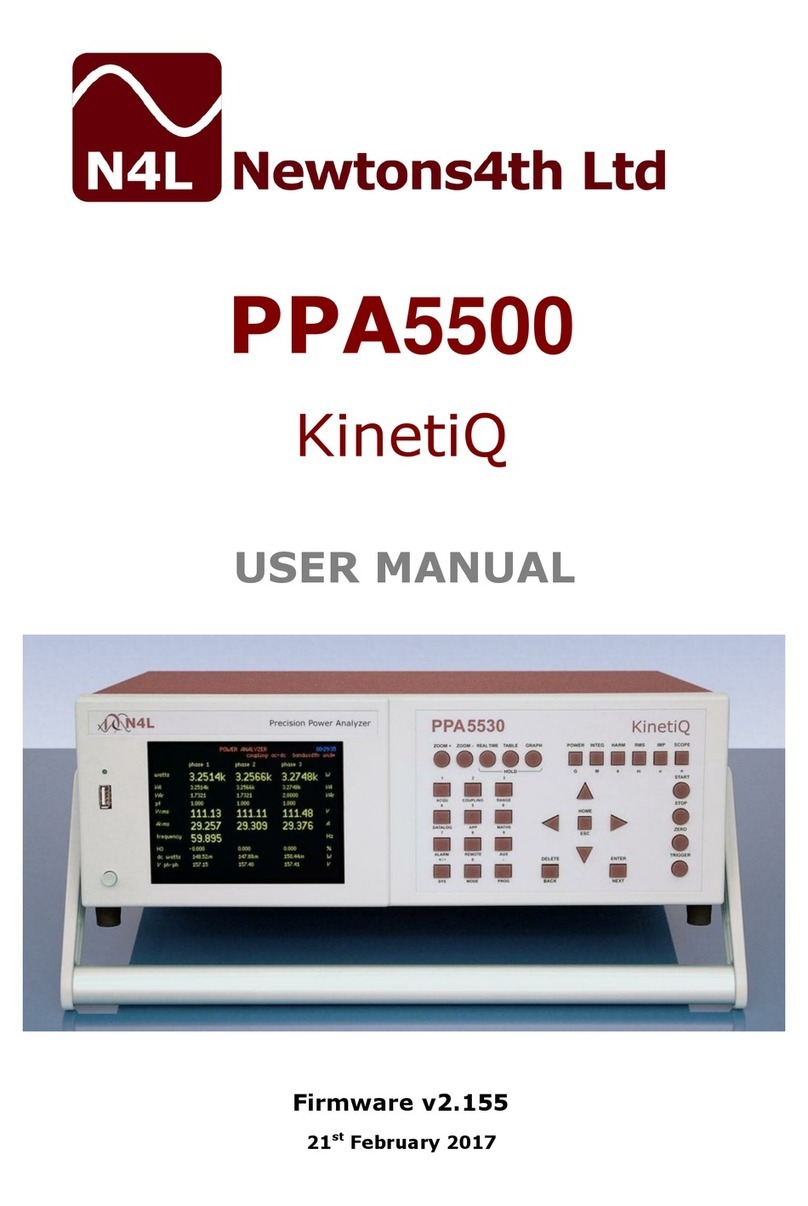
Newtons4th
Newtons4th PPA 5500 KinetiQ User manual

Newtons4th
Newtons4th PPA45 Series User guide
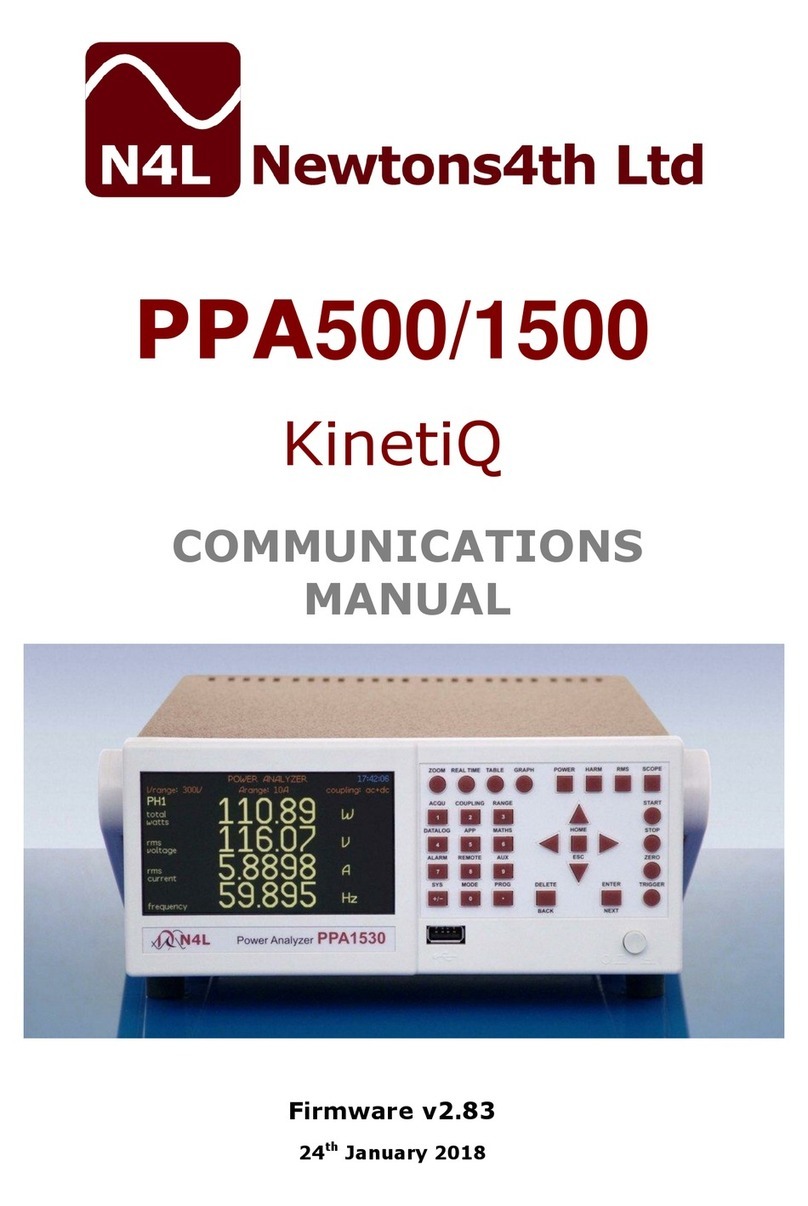
Newtons4th
Newtons4th PPA500 Use and care manual
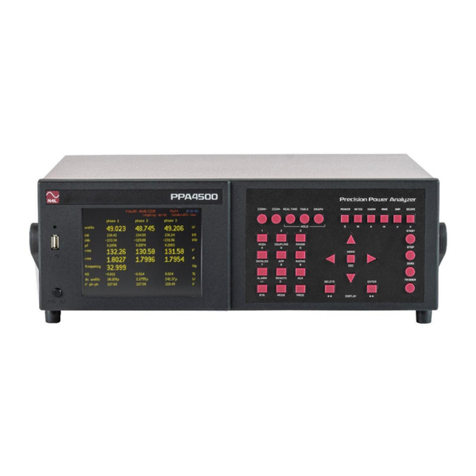
Newtons4th
Newtons4th PPA4500 User guide

Newtons4th
Newtons4th PSM1700 User manual

Newtons4th
Newtons4th PPA55 Series User guide
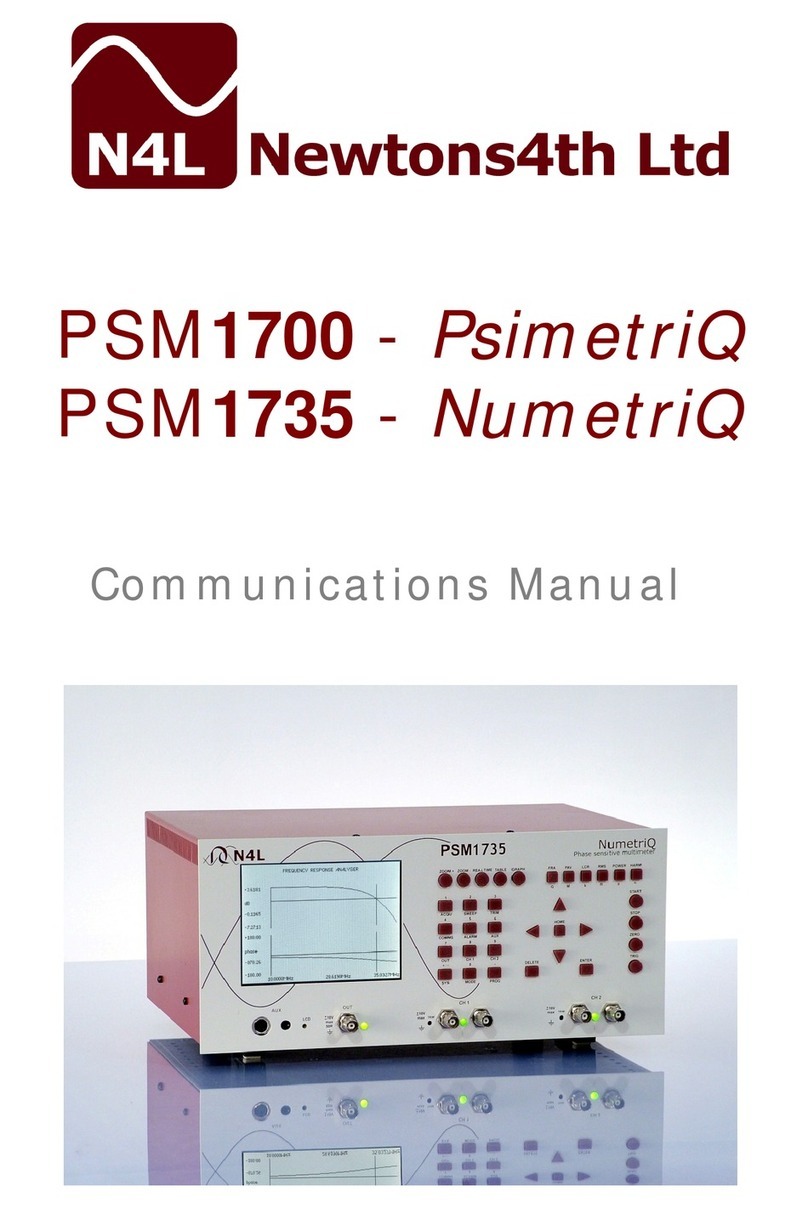
Newtons4th
Newtons4th PSM1700 Use and care manual
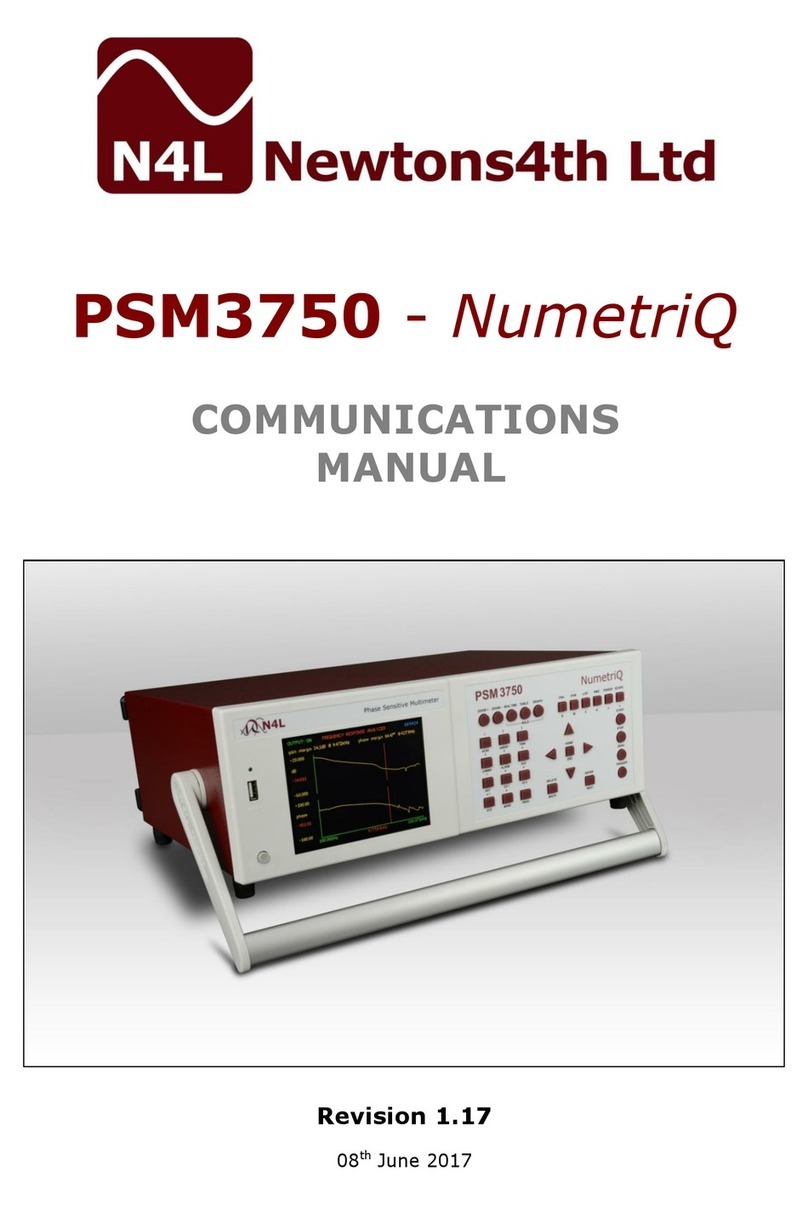
Newtons4th
Newtons4th PSM3750 NumetriQ Use and care manual
